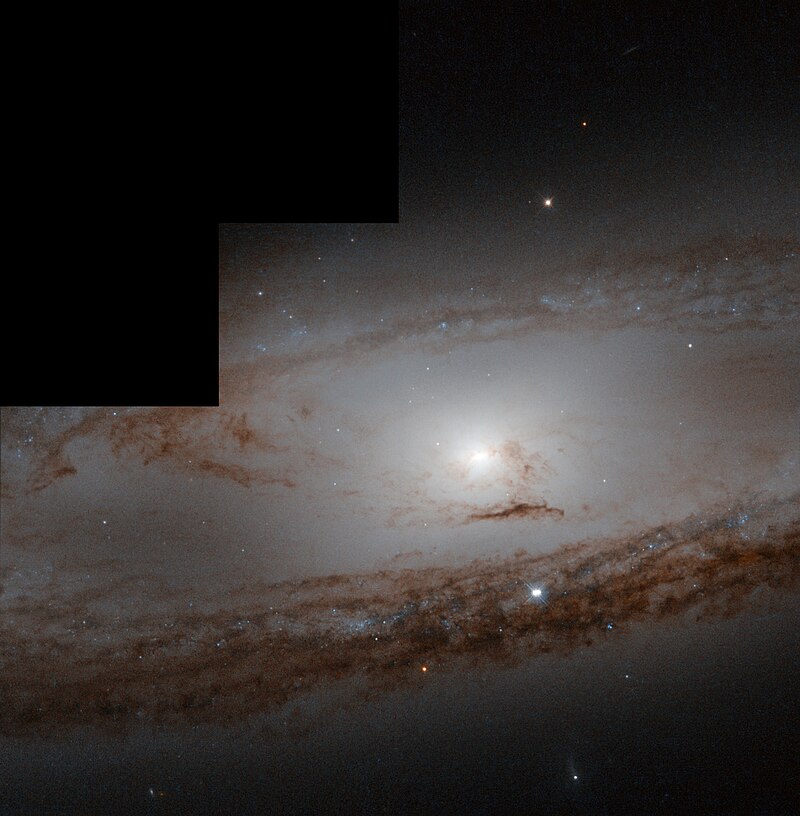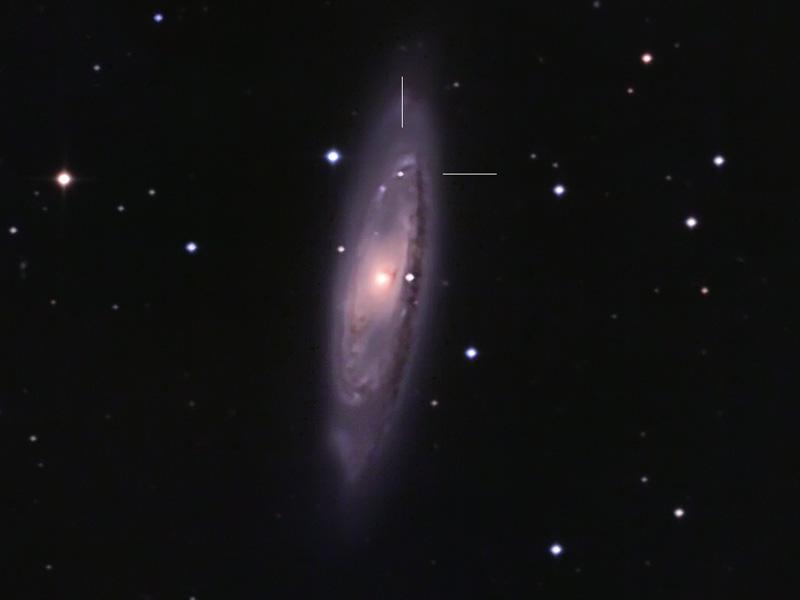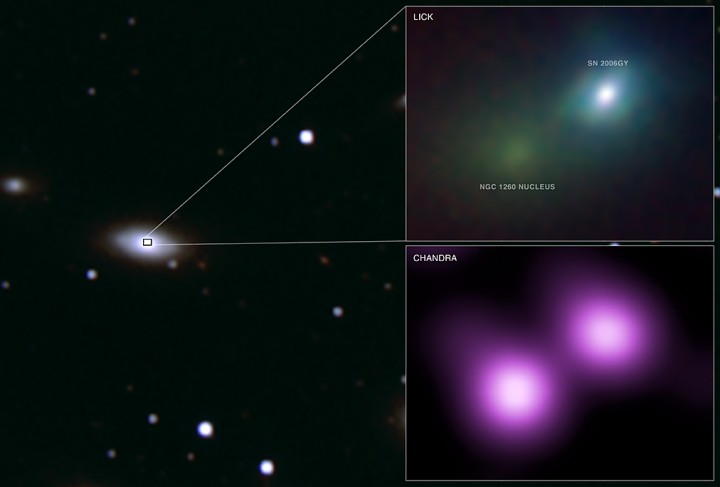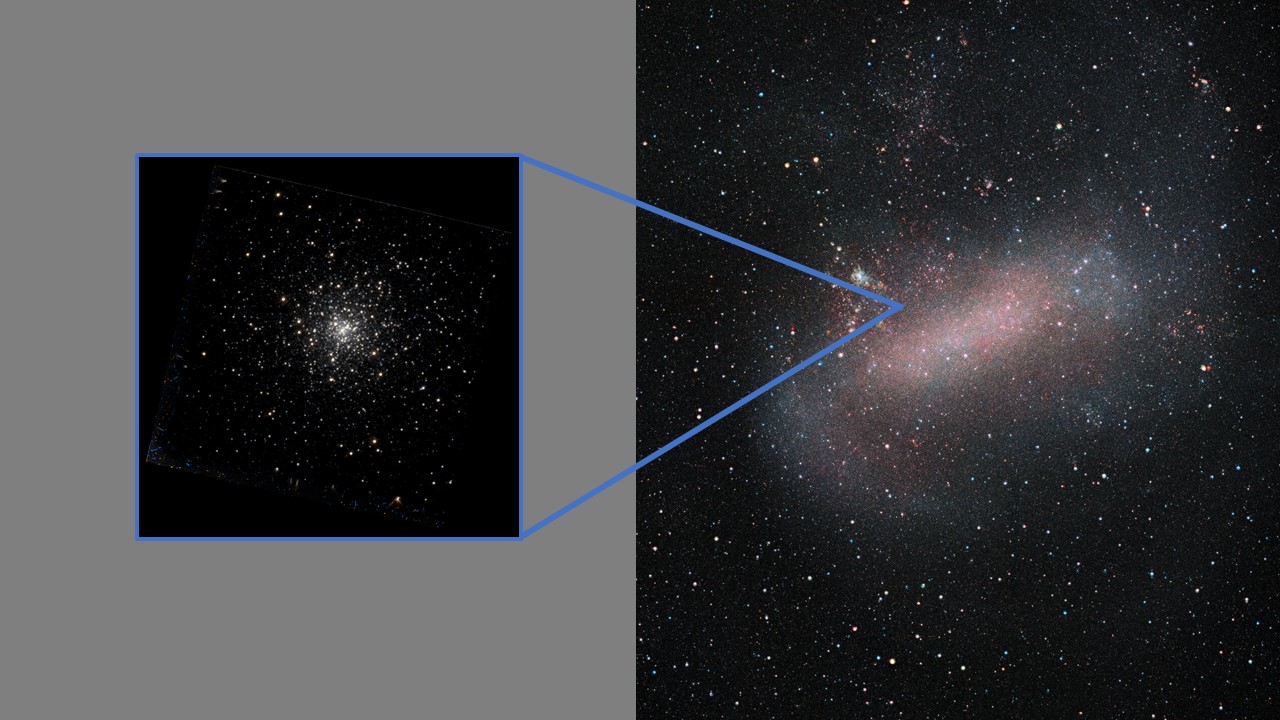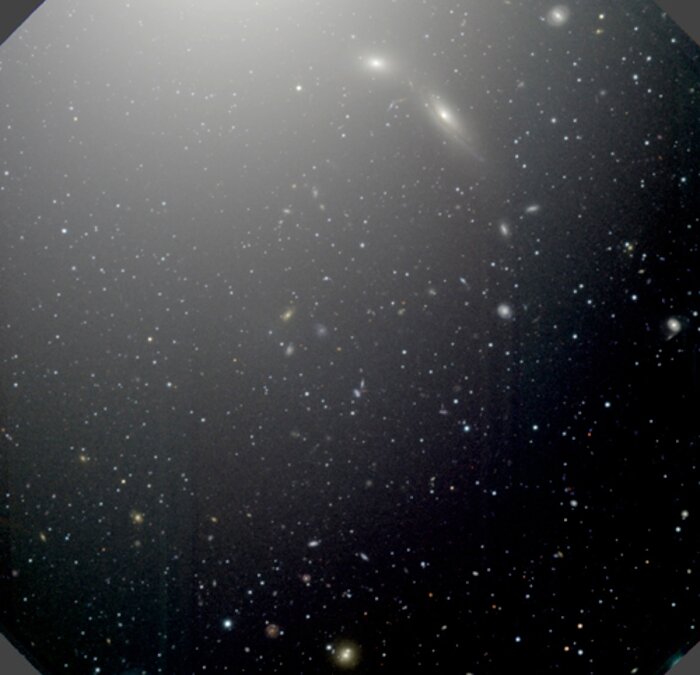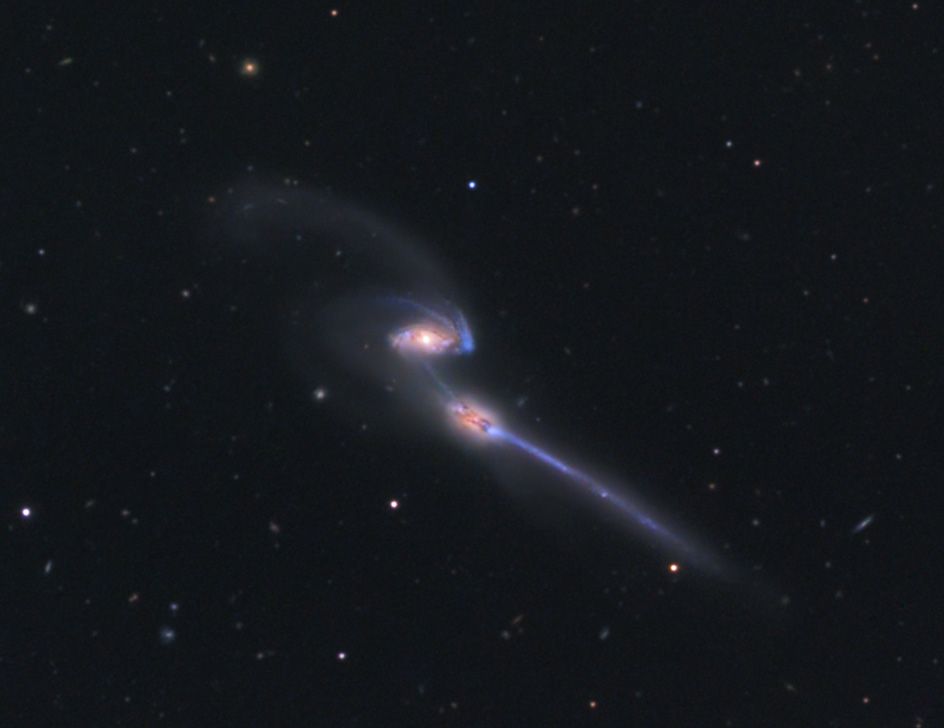At this time of year, when spring is in the air
or at least in the sky in the northern hemisphere, it is of course very suitable to greet the new season with the most iconic galaxies of spring, the Leo Triplet.
The Leo Trio. Image Credit & Copyright: Steve Cannistra
Note the puffed-up halo of M66, and he strange halo of NGC 3628 (fattest at the edges!), versus the serene, lens-shaped outline of M65. It looks as if M66 and NGC 3628 have recently interacted and disturbed each other's gravitational wells, whereas M65 has been
sitting in the stands, with slicked-down hair and well-manicured hands, calmly watching the hue and cry and the sound and the fury of its galactic neighbors.
Indeed, according to
Wikipedia, M66 and NGC 3628 may have interacted 800 million years ago. M65 may also have interacted, but "much less strongly".
An image showcasing the color differences between M65 and M66 is this picture by Bill Snyder:
Note the red dust lanes and blue star clusters of M66. Newborn hot blue stars ionize hydrogen in their vicinity and make it glow red, so both
blue and red colors in RGB+Hα portraits of galaxies are signs of star formation. Note, however, that M65 lacks both blue and red colors:
Yes, you
can see little blue clusters and individual blue stars in this rather old Hubble picture of M65, but these blue stars are so few and faint that it takes Hubble to see them.
But guess what? In 2013 there was a supernova in M65, and it was a core-collapse supernova too, a supernova from a massive Betelguese type of star! Fancy that!
So both
SN 2013am in M65 and
SN 2006gy in
NGC 1260 have shown us that apparently red and dead galaxies, apparently devoid of star formation, can sometimes still host stars so massive that they will go supernova. If you ask me, however, it takes at least a substantial dust lane to create such a massive core-collapse star, and both M65 and NGC 1260 have them.
I don't expect to see a core-collapse supernova in dust lane-less
M87, for example, or even in the thin and shredded dust lanes of
NGC 1316.
NGC 3628, the Hamburger Galaxy, certainly doesn't lack a substantial dust lane. A link in today's caption takes us to a gorgeous portrait of NGC 3628. Also take a look at an amazing picture of the 300,000 light-year-long tidal tail of NGC 3628!

Tidal tail of NGC 3628. Credit: Mark Hanson.
Martin Pugh's image does show us little red and pink emission nebulas and hints of little blue star clusters. At least there is more star formation in this galaxy than in M65.
And now I'm going to use my third and last attachment to show you a gorgeous wide angle portrait of the Leo Trio and its surroundings, including bright blue star theta Leonis.
The Leo Trio and surroundings. Credit:
Rogelio Bernal Andreo.
Okay, I'm off. Bye bye!
Ann
 The Leo Trio
The Leo Trio
